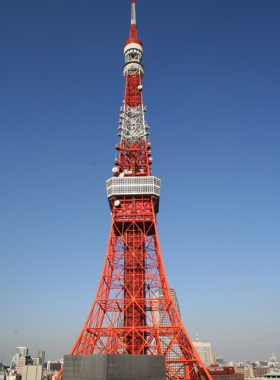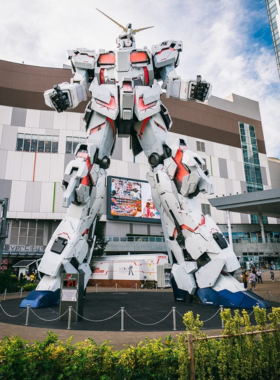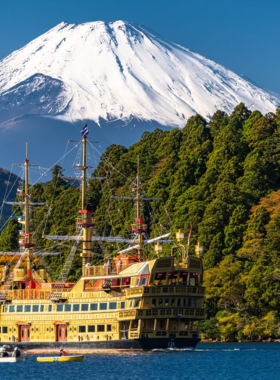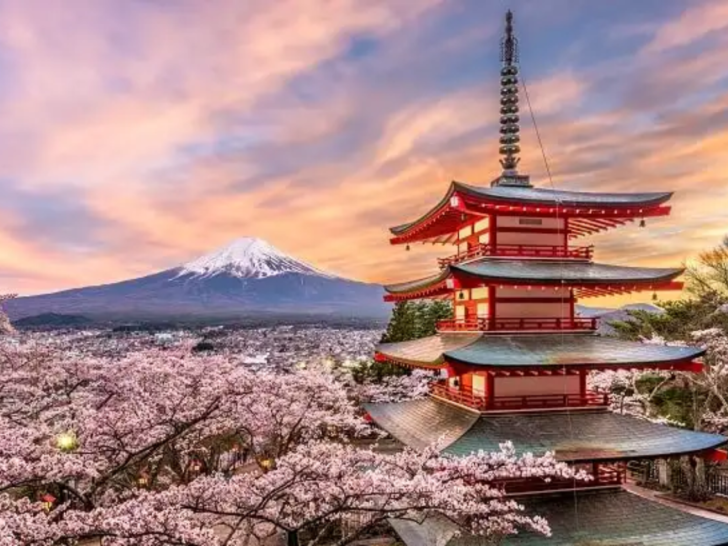Tokyo is a vibrant city that seamlessly blends tradition with modernity. With a population of over 13 million, it’s a place filled with excitement, culture, and countless experiences. From savoring sushi for breakfast to wandering through serene gardens, Tokyo offers something for every type of traveler. Let’s dive into 15 must-do activities in this incredible city, along with the best neighborhoods to visit for an unforgettable experience.

Start your day with breakfast sushi at Tsukiji Outer Market
Address: Japan, 〒104-0045 Tokyo,
| Type | Seafood dishes, fresh sushi |
| Time to Spend | 1 to 3 hours |
History and Significance: Tsukiji Outer Market has been a staple of Tokyo’s food scene for decades, serving fresh seafood to locals and visitors alike. It’s historically known for its fish auctions and traditional fish markets.
What to Expect: Expect an authentic sushi breakfast with fresh, high-quality seafood from various vendors. The market is lively and offers both prepared sushi and raw fish to sample.
Visitor Information: Open from early morning, the market is easily accessible from Tsukiji Station. Bring cash for purchases as many vendors don’t accept cards.
Tokyo is famous for its fresh sushi, and there’s no better way to kickstart your day than by having breakfast at the Tsukiji Outer Market. Known for offering the freshest sushi, you’ll find numerous vendors offering delicious options that range from sashimi to sushi rolls. The atmosphere is vibrant, filled with local chefs preparing fish right in front of you. It’s a perfect spot to enjoy authentic Japanese flavors and get a glimpse of Tokyo’s culinary scene. Don’t forget to try some traditional seafood dishes while you’re there.

Wander through the historic streets of Asakusa
Address: Taito
| Type | Free, Churches/Religious Sites, Sightseeing |
| Time to Spend | 1 to 2 hours |
History and Significance: Asakusa is home to Senso-ji, Tokyo’s oldest temple, which has attracted visitors for centuries. The area is known for its traditional atmosphere and cultural heritage.
What to Expect: A stroll through Asakusa will offer you a blend of ancient temples, street food, and unique shops. The vibrant Nakamise Street is a must-see.
Visitor Information: Asakusa is accessible via Asakusa Station. The Senso-ji Temple is free to visit, and many shops and stalls open early, closing in the evening.
Asakusa is home to the famous Senso-ji Temple, the oldest and one of the most visited temples in Tokyo. Explore the area’s historic streets and feel like you’ve stepped back in time. You can shop for souvenirs in Nakamise Dori, the traditional shopping street leading to the temple. The area also offers an array of local street food and small boutiques where you can pick up authentic Japanese goods. Asakusa gives you the perfect blend of old-world charm and vibrant, bustling energy in the heart of Tokyo.

Discover the beauty of Shinjuku Gyoen National Garden
Address: 11 Naitomachi
| Type | Parks & Gardens |
| Time to Spend | Less than 1 hour |
History and Significance: Shinjuku Gyoen, originally a royal garden, was opened to the public in 1949. It combines traditional Japanese, English, and French styles.
What to Expect: Enjoy a peaceful escape with expansive lawns, beautiful seasonal flowers, ponds, and meandering walking paths. It’s especially popular during cherry blossom season.
Visitor Information: The garden opens from 9:00 AM to 4:30 PM and is accessible from Shinjuku Gyoenmae Station. Entrance fees apply, and it’s a great spot for picnics.
Shinjuku Gyoen National Garden is a peaceful escape from the bustling city life of Tokyo. Located in Shinjuku, it’s a lush green oasis where you can relax, have a picnic, or simply take a leisurely stroll. The garden beautifully blends Japanese, English, and French garden styles, making it unique. During spring, it’s popular for cherry blossom viewing, while autumn attracts visitors with stunning fall foliage. Whether you’re looking for a quiet retreat or a nature-filled experience, this garden provides the perfect spot to unwind and appreciate nature.

Pay a visit to the Meiji Shrine
Address: 1-1 Yoyogikamizonocho
| Type | Free, Churches/Religious Sites, Monuments and Memorials, Sightseeing |
| Time to Spend | 1 to 2 hours |
History and Significance: The Meiji Shrine, dedicated to Emperor Meiji and Empress Shoken, symbolizes Japan’s transition from feudalism to a modern empire.
What to Expect: A serene, wooded area where you can explore Shinto rituals, including purifying at the Temizusha and making offerings.
Visitor Information: Located near Harajuku Station, the shrine is free to enter and open daily. The surrounding forest provides a tranquil environment for reflection.
The Meiji Shrine is a stunning Shinto shrine dedicated to Emperor Meiji and his wife, Empress Shoken. It’s located in a large forested area near Harajuku and is one of Tokyo’s most famous attractions. The shrine itself is peaceful, offering visitors a chance to learn about Japan’s rich history and culture. You can participate in traditional rituals like purifying yourself with holy water at the Temizusha and making offerings at the main shrine. The surrounding forest provides a tranquil escape from the city’s noise, making it an unforgettable experience.

Shop at the upscale Ginza district
Address: Chuo-ku
| Type | Free, Neighborhood/Area, Shopping |
| Time to Spend | 1 to 2 hours |
History and Significance: Ginza has been Tokyo’s premier shopping district since the late 1800s, featuring luxury boutiques and high-end department stores.
What to Expect: Expect to find world-class designer shops, modern architecture, and top-tier restaurants. Ginza is known for its fashion-forward style and refined atmosphere.
Visitor Information: Ginza is easily accessible via Ginza Station. Shops are typically open from 10:00 AM to 8:00 PM. Be prepared to explore the area for a full experience.
Ginza is Tokyo’s answer to the world’s most luxurious shopping districts. With designer brands like Louis Vuitton, Chanel, and Gucci lining the streets, Ginza offers a high-end shopping experience. Whether you’re looking for the latest fashion, electronics, or unique souvenirs, you’ll find something for everyone here. Aside from shopping, you can also enjoy a delicious meal at one of the fine dining restaurants in the area. Ginza is an iconic spot that beautifully merges luxury with the unique culture of Tokyo, making it a must-visit for any traveler.

Take in the view from Tokyo Tower
Address: 4-2-8 Shibakoen
| Type | Monuments and Memorials, Sightseeing |
| Time to Spend | 1 to 2 hours |
History and Significance: Tokyo Tower, built in 1958, is modeled after Paris’s Eiffel Tower and is one of Japan’s most iconic landmarks, symbolizing Japan’s post-war recovery.
What to Expect: Breathtaking views of Tokyo and beyond, including the possibility of seeing Mount Fuji on clear days. Enjoy the tower’s vibrant lighting at night.
Visitor Information: Tokyo Tower is open year-round, with entry fees for the observation decks. It’s accessible from Onarimon Station or Kamiyacho Station by a short walk.
Tokyo Tower, a landmark of the city, offers one of the best panoramic views of Tokyo. Standing at 333 meters, the tower provides observation decks where you can take in the sprawling cityscape below. On a clear day, you might even be able to spot Mount Fuji in the distance. The tower is especially stunning at night, when it lights up in vibrant colors. Whether you’re admiring the view during the day or evening, a trip to the Tokyo Tower offers a breathtaking perspective of the city’s beauty.

Experience the iconic Shibuya Crossing
Address: 2 Chome-5-9 Dogenzaka
| Type | Free, Sightseeing |
| Time to Spend | Less than 1 hour |
History and Significance: Shibuya Crossing is a famous pedestrian scramble located near Shibuya Station. It symbolizes Tokyo’s energy and modernity.
What to Expect: Thousands of people cross the street simultaneously, creating a thrilling spectacle. The area is surrounded by shopping, restaurants, and entertainment venues.
Visitor Information: The crossing is visible from Shibuya Station and is best experienced from one of the surrounding buildings. It’s a free attraction open at all hours.
Shibuya Crossing is one of the busiest pedestrian crossings in the world. It’s an iconic spot in Tokyo that captures the city’s fast-paced energy. Thousands of people cross the street simultaneously from all directions, creating a unique and exciting spectacle. This crossing is located in front of Shibuya Station, a major transportation hub connecting different neighborhoods in Tokyo. The area around the crossing is filled with shops, restaurants, and entertainment options, making it an excellent place to explore after you’ve experienced the famous crossing. Don’t forget to snap a picture!

Relax at Ueno Park
Address: Uenokoen
| Type | Free, Parks and Gardens |
| Time to Spend | 1 to 2 hours |
History and Significance: Ueno Park, established in 1873, is one of Tokyo’s oldest public parks, famous for its cultural institutions and cherry blossoms.
What to Expect: Peaceful strolls among cherry trees, museums, and a zoo. Ueno Park is a hub for cultural and seasonal activities, especially during sakura season.
Visitor Information: Ueno Park is free to visit. It’s accessible via Ueno Station, and the park is open year-round, with museums charging separate fees for entry.
Ueno Park is a perfect spot to relax, enjoy nature, and take in some local culture. As the first public park in Tokyo, it is home to museums, temples, and the famous Ueno Zoo. During spring, Ueno Park is popular for cherry blossom viewing, where locals and tourists alike gather for hanami picnics under the blooming trees. The park also has many walking paths and is great for a leisurely stroll. With its rich history and serene atmosphere, Ueno Park is a wonderful place to spend a few hours soaking up the sights.

Discover the wonders of Odaiba
Address: Odaiba
| Type | Museums, Free, Neighborhood/Area, Shopping |
| Time to Spend | Half Day to Full Day |
History and Significance: Odaiba is a man-made island in Tokyo Bay that has transformed into a high-tech entertainment hub, offering futuristic attractions.
What to Expect: Innovative architecture, giant robot statues, shopping malls, and digital art museums like teamLab Borderless. It’s a modern experience unlike any other in Tokyo.
Visitor Information: Odaiba is accessible via the Yurikamome Line from Shimbashi Station. Attractions and malls are open daily, with some having varying hours.
Odaiba is a futuristic entertainment and shopping district located on a man-made island in Tokyo Bay. It’s known for its innovative architecture and attractions like teamLab Borderless, a digital art museum, and the giant Unicorn Gundam statue. Odaiba also offers a variety of shopping malls, restaurants, and scenic spots, making it a great destination for all types of travelers. Whether you’re into technology, shopping, or just looking to enjoy a sunset by the waterfront, Odaiba is a place where you can experience Tokyo’s cutting-edge culture.

Visit the Tokyo National Museum
Address: 13-9 Uenokoen
| Type | Museums |
| Time to Spend | 2 hours to Half Day |
History and Significance: The Tokyo National Museum, founded in 1872, showcases Japan’s rich cultural heritage with historical artifacts dating back centuries.
What to Expect: Extensive collections of ancient artifacts, samurai armor, and traditional Japanese art. The museum offers a thorough exploration of Japan’s history.
Visitor Information: Located in Ueno Park, the museum is open from 9:30 AM to 5:00 PM. It charges an entrance fee, and many exhibits are in English for international visitors.
The Tokyo National Museum is a must-see for anyone interested in Japanese art and history. Located in Ueno Park, this museum houses an extensive collection of artifacts, including samurai armor, ancient pottery, and Buddhist sculptures. It offers an educational and immersive experience for visitors who want to delve deeper into Japan’s rich cultural heritage. The museum’s architecture is also impressive, blending traditional and modern design elements. If you’re a history enthusiast or simply want to learn more about Japan, this museum provides a fascinating look at the nation’s past.

Relax at the tranquil Hamarikyu Gardens
Address: 1-1 Hamarikyuteien,
| Type | Parks & Gardens |
| Time to Spend | Half Day |
History and Significance: Hamarikyu Gardens dates back to the Edo period and was once a feudal lord’s villa. It’s a beautiful example of traditional Japanese landscape design.
What to Expect: Peaceful walking paths, ponds, tea houses, and the stunning contrast of a historical garden against the city skyline.
Visitor Information: Open from 9:00 AM to 5:00 PM, Hamarikyu Gardens is easily accessible from Shiodome or Tsukiji Stations. An entry fee is required.
Hamarikyu Gardens is a traditional Japanese garden located near Tokyo Bay. This beautifully landscaped park offers a peaceful retreat from the busy city. It features ponds, walking paths, and teahouses, giving visitors a chance to experience traditional Japanese landscape gardening. The garden is home to migratory birds in the winter and is particularly stunning during cherry blossom season in spring. For a unique experience, visit the garden’s teahouse and enjoy a cup of matcha while taking in the serene surroundings. It’s the perfect place to unwind after exploring the city.

Take a day trip to Mount Fuji
Address: Mt. Fuji Tours
| Type | Tours |
| Time to Spend | Half Day to Full Day |
History and Significance: Mount Fuji has been a sacred site in Japan for centuries, symbolizing beauty and resilience. It’s also a UNESCO World Heritage Site.
What to Expect: Hiking trails, breathtaking views, and serene lakes surrounding the mountain. A trip to Mount Fuji offers stunning natural beauty and cultural significance.
Visitor Information: Mount Fuji is accessible by train or bus from Tokyo. The climbing season is from July to September, and other months are ideal for sightseeing.
Mount Fuji, Japan’s iconic and sacred mountain, is a must-visit for nature lovers and adventure seekers. Located just outside of Tokyo, it’s a popular day trip destination for hiking and sightseeing. You can hike up to the fifth station, enjoy the stunning views, or explore the nearby Fuji Five Lakes area. The mountain is also famous for its symmetrical beauty, and the surrounding area offers opportunities for outdoor activities like boating, cycling, and camping. Whether you choose to hike or simply admire the view, Mount Fuji offers a memorable experience.

Visit the Edo-Tokyo Museum
Address: 1 Chome-4-1 Yokoami
| Type | Museum |
| Time to Spend | 2 hours to Half Day |
History and Significance: The Edo-Tokyo Museum chronicles Tokyo’s transformation from a small fishing village to a modern metropolis. It highlights the Edo period (1603-1868).
What to Expect: Interactive exhibits, historical displays, and life-size models of old Tokyo. It’s an immersive experience that provides a deep look into Japan’s history.
Visitor Information: Located in Ryogoku, the museum is open from 9:30 AM to 5:30 PM. It charges an entry fee and offers English guides for international visitors.
The Edo-Tokyo Museum offers a deep dive into the history of Tokyo, from its origins as a small fishing village to its development into one of the world’s largest metropolises. The museum’s exhibits are interactive and visually engaging, making it a great place to learn about Japan’s Edo period. Highlights include life-size replicas of historical buildings and displays of ancient artifacts. If you’re interested in history and culture, the Edo-Tokyo Museum is an informative and entertaining stop that offers valuable insight into the city’s transformation through the centuries.

Explore Harajuku’s street fashion scene
Address: Tokyo
| Type | Trendy boutiques, vintage shops, and stylish cafes |
| Time to Spend | 2 hours to Half Day |
History and Significance: Harajuku is the birthplace of youth fashion in Japan, with an eclectic mix of styles emerging since the 1980s.
What to Expect: Bold, creative fashion choices, quirky boutiques, and the latest trends in street style. It’s a colorful area known for self-expression through clothing.
Visitor Information: Harajuku is accessible via Harajuku Station. Shops along Takeshita Street are open from morning to evening, and the area gets busier on weekends.
Harajuku is famous for its vibrant street fashion scene, where unique and creative styles come to life. Located near Meiji Shrine, Harajuku is home to a mix of trendy boutiques, vintage shops, and stylish cafes. You’ll find young fashion enthusiasts expressing themselves through bold, eccentric outfits, which makes the area a fun place to explore. If you’re into fashion, be sure to check out Takeshita Street, where the latest trends are on display. Whether you’re shopping or simply people-watching, Harajuku is the place to immerse yourself in Tokyo’s cutting-edge style.

Experience the nightlife in Roppongi
Address: Roppongi, Tokyo
| Type | Nightlife and entertainment scene, nightclubs, bars |
| Time to Spend | 2 hours to Half Day |
History and Significance: Roppongi has been a center for international visitors and expats since the 1950s, offering a dynamic nightlife and entertainment scene.
What to Expect: Nightclubs, bars, live music venues, and international restaurants. It’s one of the best districts to experience Tokyo after dark.
Visitor Information: Roppongi is accessible from Roppongi Station. The nightlife scene picks up around 9:00 PM and lasts until the early morning, with no cover charges for many venues.
Roppongi is known for its vibrant nightlife and entertainment scene. The district offers a variety of nightclubs, bars, and restaurants, catering to both locals and tourists. Whether you’re looking to dance the night away, enjoy live music, or sip cocktails at a chic rooftop bar, Roppongi has something for everyone. The area is also home to some of Tokyo’s best international restaurants, offering diverse cuisines from around the world. Roppongi’s energetic atmosphere makes it the perfect place to experience Tokyo after dark, whether you’re out for a night of fun or relaxation.





